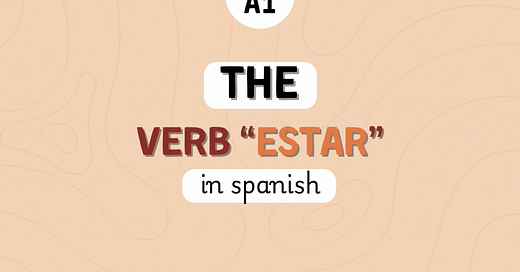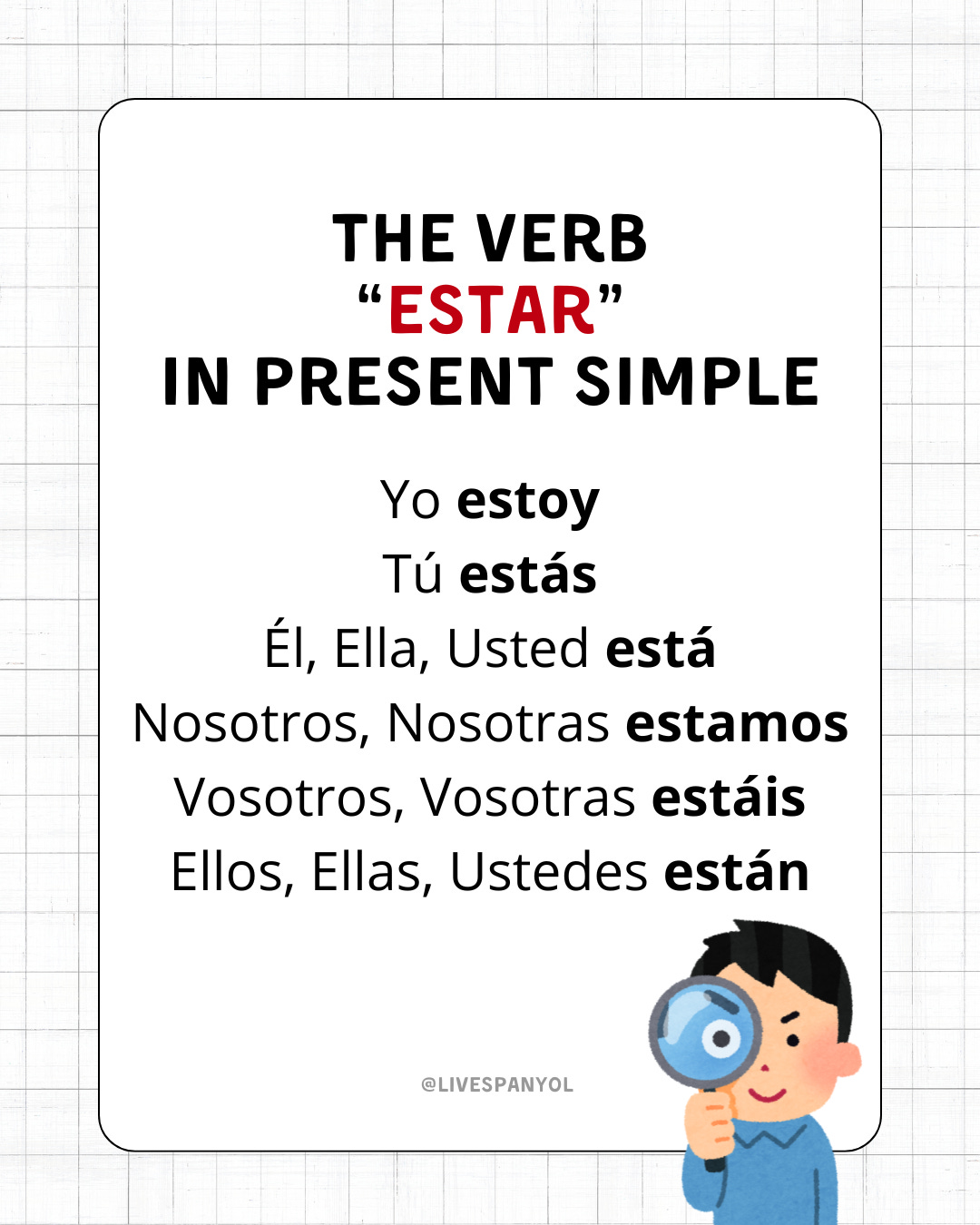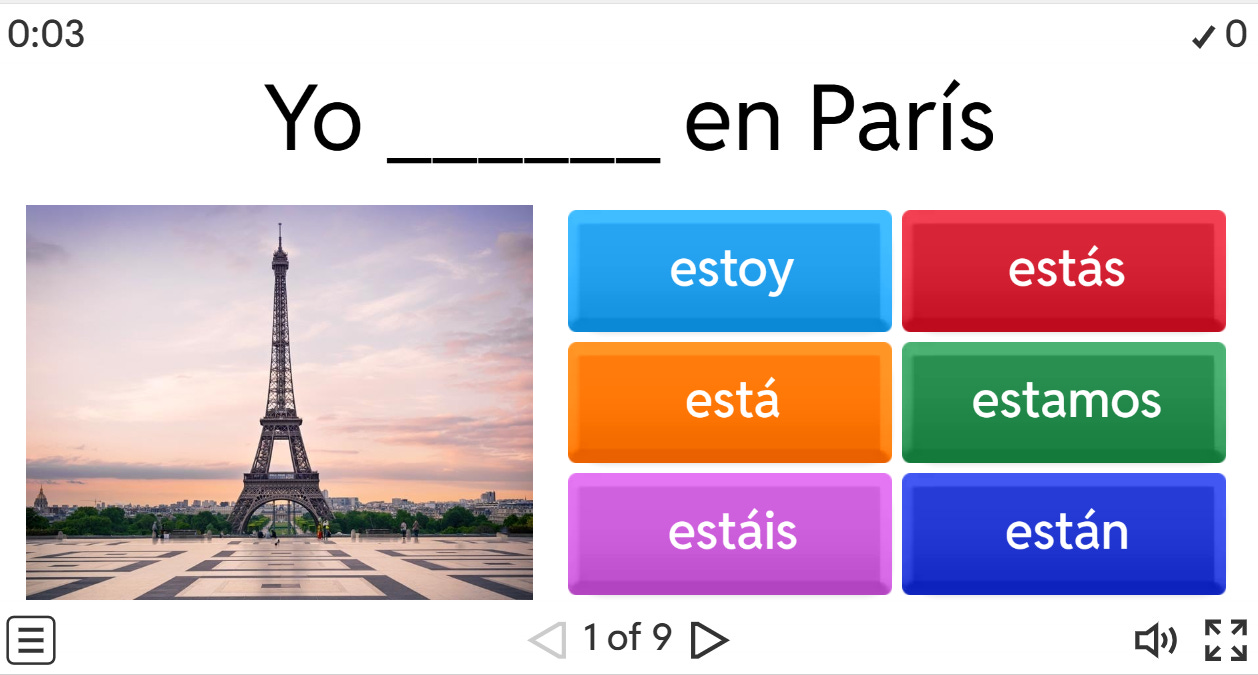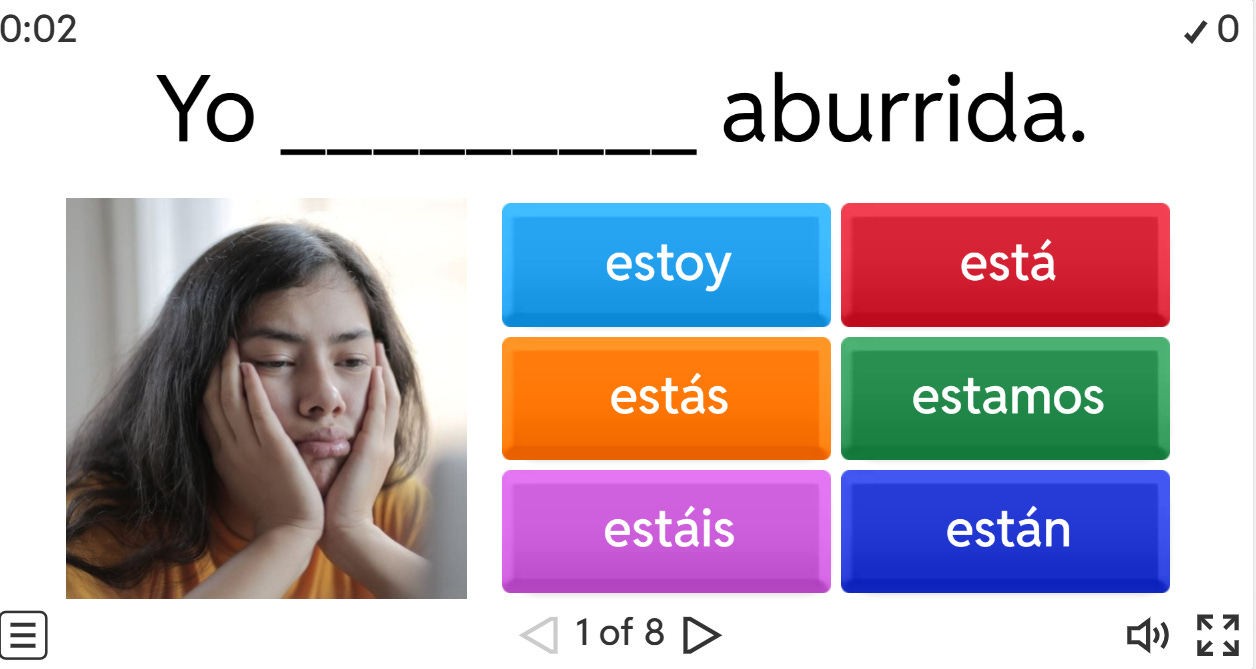The Verb Estar (to be)
If you’re learning Spanish, you’ve probably come across the verb estar and wondered how it’s different from ser. Both verbs mean “to be,” but they’re used in very different ways. In this post, we’ll break down exactly when and how to use estar so you can master this essential verb!
Let’s dive in and explore how to use estar correctly! 🚀
What does “Estar” express? 🤔
Estar is primarily used to indicate location and temporary situations or conditions. Let’s dive into the details:
1. Location 📍
Use estar to describe where someone or something is—whether it’s permanent, temporary, real, or even imaginary.
La ciudad de Miami está en la Florida. 🌴
(The city of Miami is in Florida.)El libro está sobre la mesa. 📖
(The book is on the table.)
2. Temporary Physical Conditions 🤒
Estar is used to describe physical states that are temporary or subject to change.
Los chicos están enfermos. 🤧
(The children are sick.)Estoy cansado después del trabajo. 😴
(I’m tired after work.)
3. Temporary Mental States or Moods 😊😢
Feeling happy, sad, or stressed? Use estar to express emotions or mental states that aren’t permanent.
¡Estás deprimida! 😞
(You’re depressed!)Estoy muy feliz hoy. 😄
(I’m very happy today.)
4. Temporary Traits or Qualities 🎭
Sometimes, estar is used to describe temporary traits or qualities, often to emphasize a change from a previous state.
Hombre, estás delgado. 💪
(Wow, you look thin.)El cielo está nublado hoy. ☁️
(The sky is cloudy today.)
5. Temporary Roles or Jobs 👩🍳
When someone is temporarily in a role or job, estar is the verb to use. It’s often paired with the preposition de.
Luisa es ingeniera, pero ahora está de camarera en un restaurante muy fino. 🍽️
(Luisa is an engineer, but now she’s working as a server at a fancy restaurant.)
6. Present Progressive Tense 🏃♂️
Estar is also used with the -ando or -iendo forms of verbs (gerunds) to form the present progressive tense, which describes actions happening right now.
Estamos buscando trabajo. 🔍
(We are looking for work.)Ellos están hablando por teléfono. 📞
(They are talking on the phone.)
Quick Recap: When to Use Estar 🧠
Location 📍: Where something or someone is.
Temporary conditions 🤒: Physical, mental, or emotional states.
Temporary traits 🎭: Descriptions that can change.
Temporary roles 👩🍳: Jobs or situations that aren’t permanent.
Present progressive 🏃♂️: Actions happening right now.
Estar vs. Ser ⚖️
Remember, ser is used for permanent characteristics (like identity, origin, or time), while estar is for temporary states or locations. If it’s something that can change, estar is your go-to verb!
Conjugation of Estar in the Present Tense 📝
Here’s how estar is conjugated in the present tense:
Commonly Used Expressions with Estar 🗣️
Here are some useful expressions that use estar:
Estar a punto de + infinitive: to be about to (do something)
Estoy a punto de salir. 🚪
(I’m about to leave.)
Estar conforme: to be in agreement
Estoy conforme con la decisión. 👍
(I agree with the decision.)
Estar de acuerdo (con): to agree (with)
Estoy de acuerdo contigo. 🤝
(I agree with you.)
Estar de vacaciones: to be on vacation
Estamos de vacaciones en la playa. 🏖️
(We’re on vacation at the beach.)
Estar de vuelta: to be back
Estoy de vuelta en casa. 🏠
(I’m back home.)
Estar para + infinitive: to be about to (do something)
Estoy para terminar este proyecto. 📂
(I’m about to finish this project.)
Estar por: to be in favor of
Estoy por la nueva ley. ✊
(I’m in favor of the new law.)
Estar por + infinitive: to be inclined to (do something)
Estoy por salir a caminar. 🚶♂️
(I feel like going for a walk.)
¿Cómo está Ud.?: How are you?
¿Cómo está usted, señor? 👋
(How are you, sir?)
Estar used by itself: to be in, to be home, to be available
—Busco al señor Soto. 🔍
(I’m looking for Mr. Soto.)—Lo siento, pero no está en este momento. 😔
(I’m sorry, but he’s not in right now.)
Complete the sentences with estar.
🔗 Click here to practice.
Complete the sentences with estar, and the words from the box.
Words to use:
aburrida (bored)
agotado (exhausted)
contento (happy)
de buen humor (in a good mood)
de mal humor (in a bad mood)
enfadado (angry)
resfriado (with a cold)
triste (sad)
🔗 Click here to practice.
Read the following short paragraph in Spanish and answer the questions below. This exercise will help you practice understanding estar in context while improving your reading skills!
Questions (Preguntas):
🔑 Answers (Respuestas):
b) En su casa
(Ana is at her house today.)b) Cansada
(Ana is tired because she was on vacation yesterday.)b) En la cocina
(Ana’s sister is in the kitchen, preparing breakfast.)b) Durmiendo
(Ana’s dog is sleeping in the garden.)b) Porque tiene mucho trabajo
(Ana is not in a good mood because she has a lot of work.)
Final Thoughts on Mastering “Estar”
Congratulations! 🎉 You’ve taken a big step toward mastering the verb estar in Spanish. From understanding its conjugation to practicing its uses in real-life contexts, you’re well on your way to becoming more confident in your Spanish skills.
Here’s a quick recap of what we’ve covered:
Conjugation of estar: You learned how to conjugate estar in the present tense.
Uses of estar: You discovered that estar is used for location, temporary conditions, emotions, and more.
Common expressions: You practiced phrases like estar de acuerdo (to agree) and estar de vacaciones (to be on vacation).
Exercises: You completed exercises to reinforce your learning, including fill-in-the-blanks, matching, and reading comprehension.
Next Steps in Your Spanish Journey
Now that you’ve practiced estar, here are some ideas to keep improving:
Practice daily: Use estar in simple sentences about your day. For example:
Estoy en el trabajo. (I am at work.)
Estoy feliz hoy. (I am happy today.)
Review ser vs. estar: Since ser and estar both mean “to be,” it’s important to understand their differences.
Engage with Spanish media: Watch videos, listen to podcasts, or read short stories in Spanish to see estar in action.
🚀 Want to Learn More?
📅 Book a 1-on-1 Spanish Lesson with me! 👉 Click here to schedule!










